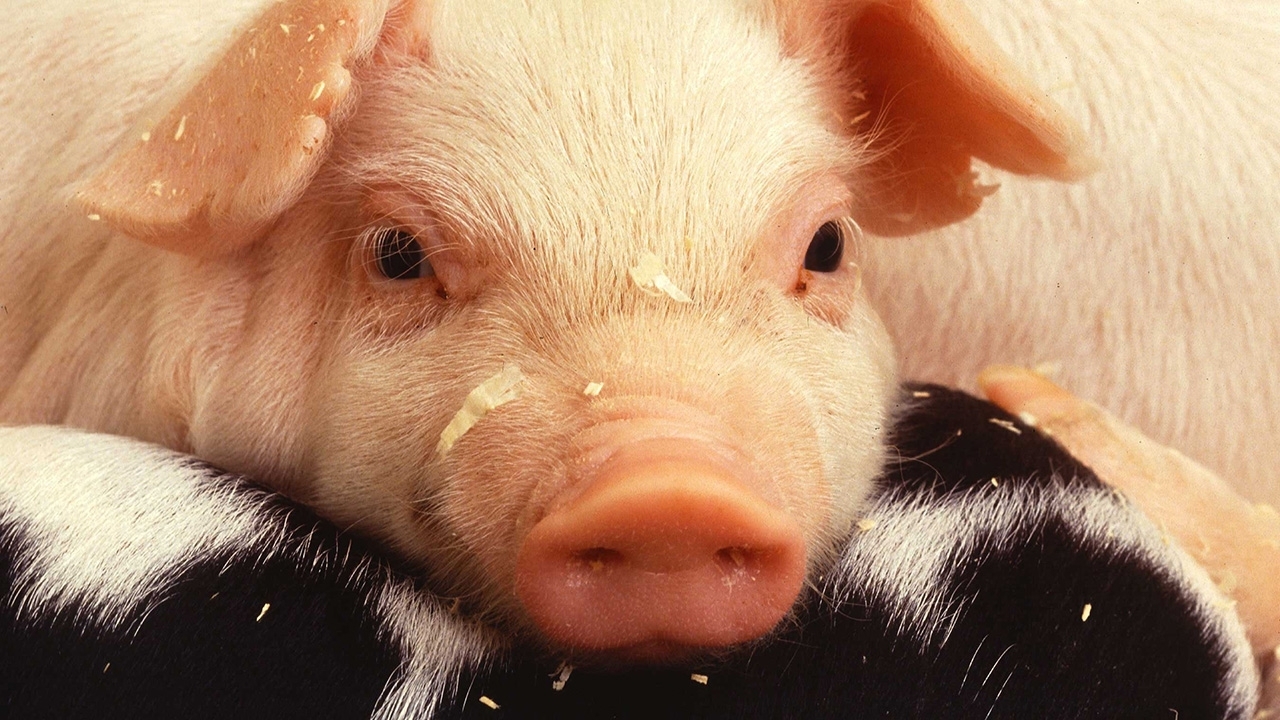Pseudorabies

Pseudorabies is a contagious disease that primarily affects swine, but it can also affect cattle, sheep, goats, cats, and dogs. It is particularly devastating to breeding sows and piglets.
In adult pigs, the disease causes abortion and stillbirths, respiratory problems, and occasionally death. In newborn pigs, it attacks the respiratory and central nervous systems, causing incoordination, sneezing, coughing, and death. Although U.S. commercial swine herds have been free of this disease since 2004, pseudorabies is present in wild swine in this country, making them a potential source of infection for domestic pigs.
In piglets:
- Central nervous system signs: tremors, seizures, hind leg paralysis (piglets will sit on their haunches similar to a dog; termed "dog-sitting"), recumbency, paddling, or walking in circles
- Incoordination
- Sneezing
- Coughing
- Death
In adult pigs:
- Coughing
- Fever
- Pneumonia
- Central nervous system signs: muscle tremors and convulsions (less common and occur occasionally)
- Reproductive issues, such as failure to breed, abortions, mummified piglets, stillbirths, and small litters
Pseudorabies is spread by animal-to-animal contact between an infected pig that is shedding virus and an uninfected pig. The virus can also be spread on inanimate objects such as boots, clothing, and equipment. Breeding can also spread pseudorabies.
Biosecurity is the best defense against this disease. Producers should:
- Use double fencing and other measures to keep pigs with access to the outdoors away from feral swine. Contact with feral swine puts swine herds at risk of pseudorabies virus exposure.
- Source new pigs from validated-qualified (VQ) swine herds. VQ herds are routinely tested for pseudorabies and swine brucellosis. Buying from a VQ herd reduces the risk of introducing these diseases into your herd.
- Develop a biosecurity plan to protect your herd.
There's no treatment for pseudorabies. Your veterinarian may prescribe antibiotics to control secondary bacterial infections. Pseudorabies vaccines are available but require APHIS and State animal health official approval for use. Approval may be granted during an outbreak or another emergency situation.
What To Expect When Your Pigs Have Pseudorabies
If your pigs show signs of pseudorabies, your veterinarian will collect blood samples and tissues (from dead piglets, for example) to submit to the State veterinary diagnostic lab. The lab will screen the samples for pseudorabies virus and submit any non-negative results to the National Veterinary Services Laboratories in Ames, IA, for confirmatory testing.
Herds that test positive for pseudorabies must be depopulated. APHIS and State officials will also conduct an epidemiological investigation to make sure the virus didn't spread to other swine herds.
APHIS provides indemnity and compensation to producers to:
- Remove animals that are affected, suspected, or exposed to diseases of concern
- Eliminate dangerous viruses from the environment
If your herd is impacted by pseudorabies, you may qualify for a Federal indemnity payment to reimburse you for your related losses. To learn more, contact our Swine Health Center at vs.sp.asep.swine@usda.gov.
Report Signs of Animal Disease
Producers or owners who suspect an animal disease should contact their veterinarian to evaluate the animal or herd. Find an accredited veterinarian.
Animal health professionals (veterinarians; diagnostic laboratories; public health, zoo, or wildlife personnel; and others) report diagnosed or suspected cases of nationally listed reportable animal diseases to APHIS Area Veterinarians in Charge and to the State animal health official as applicable under State reporting regulations.
Controlling Pseudorabies
Pseudorabies has been in the United States for at least 150 years. Although the disease is still present in wild swine, commercial production swine herds in all 50 States have been pseudorabies-free since 2004. A swine herd is considered commercial when there are adequate measures in place to prevent contact with and infection from feral swine and pigs that could come in contact with feral swine, both of which are potential carriers of the pseudorabies virus. Sporadic pseudorabies infections occur in outdoor production herds or swine that have access to the outdoors, especially where contact with feral swine is possible.
APHIS developed minimum program standards (129.85 KB) for eradicating pseudorabies from domestic swine in the United States. These standards were endorsed by swine health practitioners and State animal health officials at the annual meeting of the United States Animal Health Association in October 2003.
You can also find more about eradicating pseudorabies by reading "Pseudorabies (Aujeszky’s Disease) and Its Eradication: A Review of the U.S. Experience" (APHIS Technical Bulletin No. 1923).
APHIS Wildlife Services conducts surveillance and research on dozens of wildlife diseases, including pseudorabies and other diseases associated with feral swine. For more information, visit our National Wildlife Disease Program and National Wildlife Research Center.

